Column: It’s 2024. Time to start acting like climate change actually matters
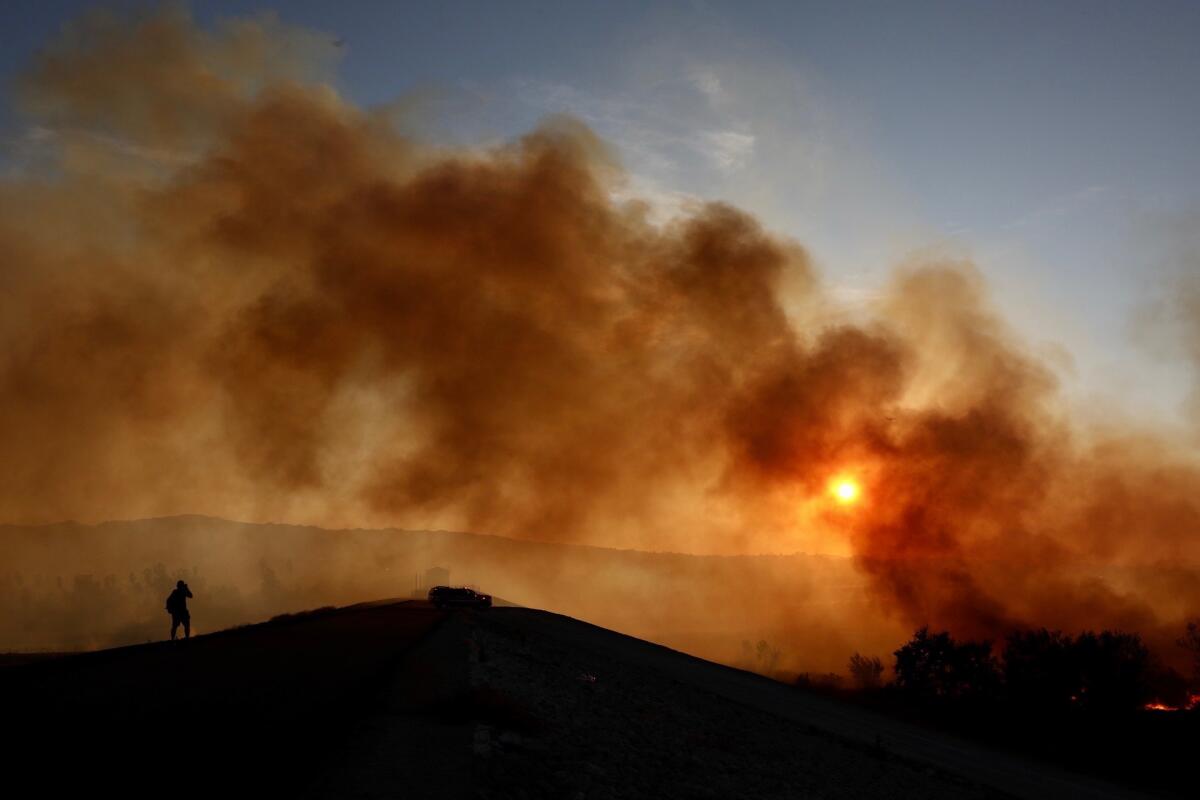
- Share via
My introduction to climate change politics came via Al Franken.
Yes, Al Franken, the “Saturday Night Live” comedian-turned U.S. senator who resigned from Congress amid accusations of sexual harassment. It was 2003, I was 11 years old, and I had stumbled across a copy of his new book, “Lies and the Lying Liars Who Tell Them: A Fair and Balanced Look at the Right,” drawn in by the catchy title.
Global warming wasn’t Franken’s focus. But his references to the brewing crisis resonated with me.
You're reading Boiling Point
Sammy Roth gets you up to speed on climate change, energy and the environment. Sign up to get it in your inbox twice a week.
You may occasionally receive promotional content from the Los Angeles Times.
He criticized then-President George W. Bush for ditching the Kyoto Protocol, a predecessor to the Paris climate agreement. He slammed Fox News host Sean Hannity for refusing to acknowledge the role of SUVs in rising temperatures. He condemned then-Vice President Dick Cheney’s oil industry ties, and featured a New York Times front page with an article about melting glaciers.
The more I learned about carbon pollution, the more obvious it felt to preteen me that something was deeply amiss with American politics. Why weren’t we quickly switching to renewable energy? How long could one of our two major political parties act like nothing was wrong? I had the same questions after going to see Al Gore’s film “An Inconvenient Truth” in 2006, and after studying sustainable development in college, and after beginning my career as an energy journalist in 2014.
I have the same questions now.
As we enter 2024 — two decades after I picked up Franken’s book — the United States is emerging from a year during which it produced more oil than any country in history. We’re barreling toward a presidential election that will more than likely feature a Republican candidate who denies or questions the basic scientific reality of planet-warming emissions. Even in California, a self-professed leader in fighting climate change, carbon emissions aren’t falling fast enough to meet our goals.
How have we not figured this out yet? How is it that in 2024 — after heat waves have killed hundreds of people, wildfires have destroyed entire cities and rising seas have forced us to consider pulling back from the coast — we still spend more time arguing about whether climate change is real, and if so how to deal with it, than we do replacing coal, oil and gas with clean energy?
The fossil fuel industry’s campaign-finance stranglehold over much of the the Republican Party is a big reason. But it’s not the only one. I have plenty of family and friends who understand the climate crisis is a serious problem and feel duly offended when former President Trump calls it a hoax, but who nonetheless don’t make it a priority when they fill out their ballots, or buy a new car or stove, or post their opinions on social media. There’s always something more pressing, more immediate, more terrifying.
Except there’s not. It’s 2024. We need to start seeing the world through climate-colored goggles.
I’ll try to help you do that, with stories and columns that show how the energy transition is playing out across California and the American West, and how the climate crisis is affecting us here. Here are five issues I’m following in 2024.
1. The pace of progress
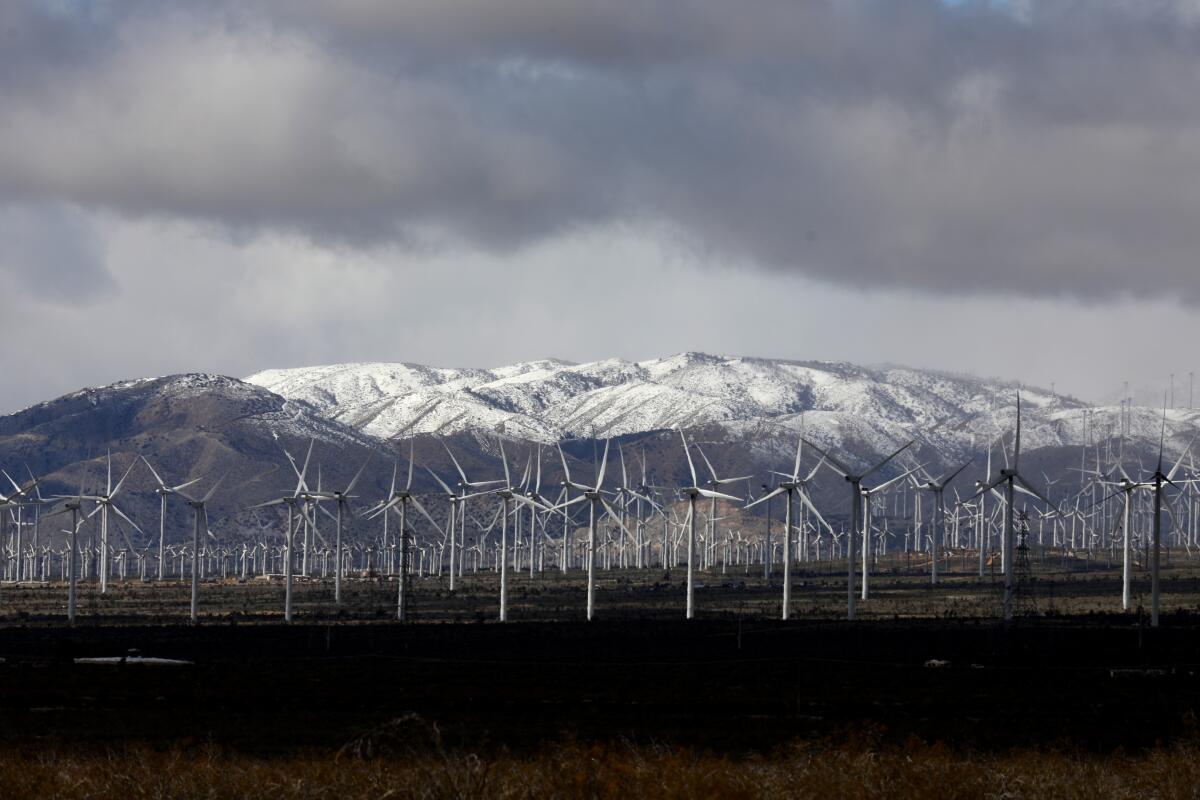
It’s not all bad. There are reasons for climate hope.
The world added record amounts of solar and wind power in 2023, and that growth is poised to continue. In the U.S., it will be accelerated by hundreds of billions of dollars in incentives from the Inflation Reduction Act, the climate bill signed by President Biden. Batteries that store solar and wind power are growing fast too, aided by falling costs. Batteries won’t make it possible to keep the lights on 24/7 with renewables alone, but they should go a long way toward limiting our need for fossil fuels.
The question now isn’t whether heat-trapping carbon emissions will go down — it’s whether they’ll go down fast enough to help us achieve a non-disastrous future. Scientists estimate that humanity must slash emissions 43% by 2030, just six years from now, to limit planetary warming to the global agreed-upon target of 1.5 degrees Celsius.
The biggest culprit? Cars and trucks. Transportation accounts for nearly 40% of California’s carbon pollution.
2. Golden State leadership
California faces a projected $68-billion budget deficit in 2024. That will almost certainly spur efforts to cut spending on climate and renewable energy, even as fossil fuel combustion makes storms more intense and water shortages more urgent.
Will Sacramento lawmakers stand firm in their commitment to treat global warming like the emergency it is, and keep spending the money they’ve promised? Will Gov. Gavin Newsom and his advisors treat climate as just another budget line item that needs to be tidied up to burnish his political credentials, or will they put the fate of the planet ahead of his electoral fate?
I’ll be watching — and keeping an eye on elected officials in Los Angeles too.
During her first year in office, Mayor Karen Bass has followed the will of voters by making homelessness her top priority. But her choice for the Department of Water and Power’s next general manager will be the first big test of her commitment to aggressive climate action. As I wrote last month, there are reasons to wonder whether DWP is wavering on its ambitious-but-necessary goal of 100% clean energy by 2035. The city agency’s next leader will either champion that target or let it slide.
3. The Western power grid
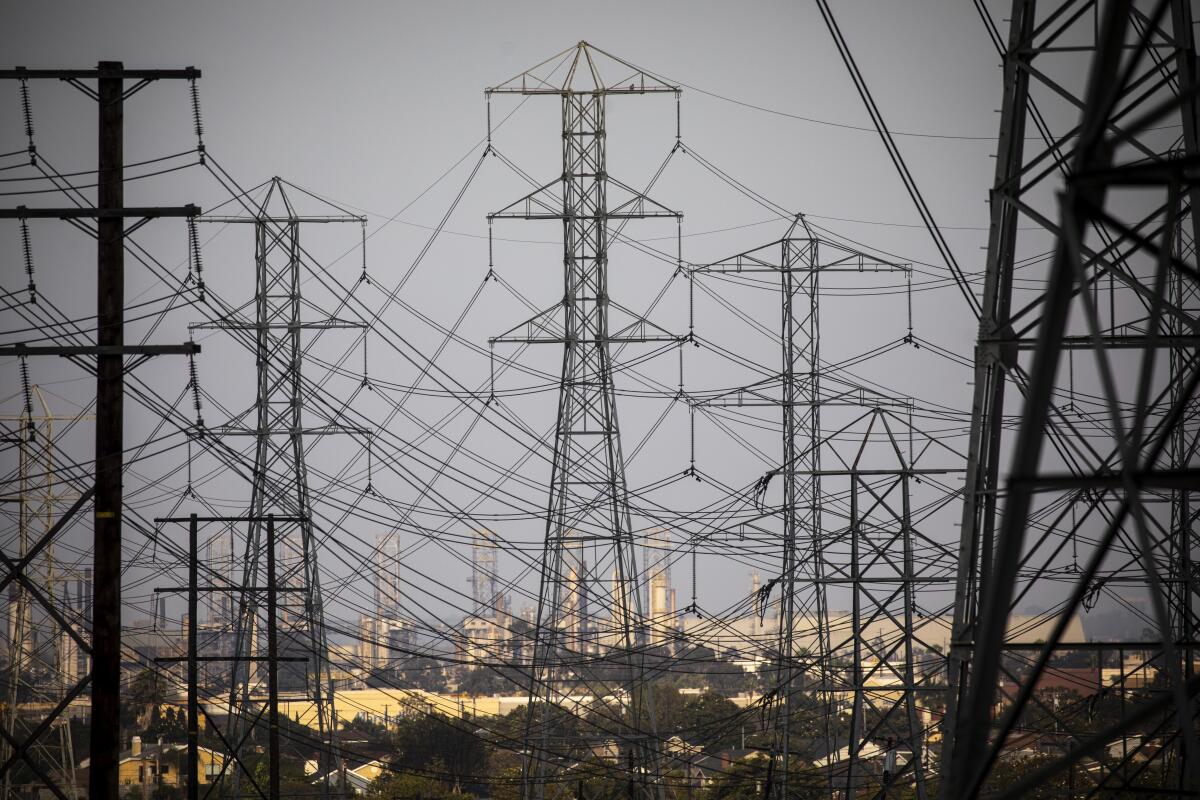
I haven’t spent the last two years traveling across the Western U.S. just because I like exploring quirky rural towns and admiring stark desert landscapes (although that’s certainly part of it). It’s also because California is part of a sprawling network of far-flung electricity generators — hydropower dams, nuclear reactors, wind turbines, coal plants and more — that shoot electrons across long-distance transmission lines to power our laptops, refrigerators, factories and more.
Will this be the year the Golden State starts working more closely with its Western neighbors to get fossil fuels off the grid?
Early signs point to yes. In the waning days of 2023, federal officials largely approved California’s long-simmering proposal for a “day-ahead market” to facilitate greater electricity-sharing across state lines. In theory, that should make it easier and cheaper to move the cleanest, lowest cost power from where it’s generated to where it’s needed. I’ll be watching to see if it works.
I’ll also be counting how many coal-fired power plants shut down in 2024. They’ve been dropping like flies, prompting layoffs at coal mines in Wyoming, Utah and elsewhere — job losses that will continue to spur political backlash to renewable energy.
4. The energy in our homes
The day is coming when many of us will have solar panels on our roofs, electric heat pumps in our walls and induction stoves in our kitchens. Those clean energy fixtures will power hyper-efficient houses and apartments with electric cars out front.
Probably not in 2024, though.
In an affront to environmentalists, Newsom’s appointees voted in 2022 to slash incentive payments for rooftop solar power — a decision that was upheld in court last month. And in another blow to clean energy in the home, a federal appeals court this week refused to reconsider its rejection of Berkeley’s first-in-the-nation ban on gas hookups in new buildings. That could make it hard for Los Angeles and dozens of other cities to keep requiring climate-friendly appliances in new homes and businesses.
In potentially better news for climate, the California Public Utilities Commission is planning to reconfigure electric rates in a way that supporters say will make utility bills cheaper for most people, encouraging families to switch to electric cars and appliances. The planned new rates will include higher monthly charges for wealthier people, which has unsurprisingly led to criticism.
5. Presidential election time

With just a few years left to keep global warming to 1.5 degrees Celsius, every election counts.
But whether Biden gets reelected or Trump or another Republican takes his place in the White House, that won’t be the end of the climate change story. As I wrote in November 2020, before it was clear who the next U.S. president would be, a Biden victory “wouldn’t magically solve the climate crisis” any more than a Trump victory would guarantee our doom. We’ve got a long way to go. Even if we can’t stop temperatures from rising 1.5 degrees, 2 degrees would be a hell of a lot better than 3.
Whoever wins the White House, I’ll probably look back at 2024 with disappointment and frustration over all the climate progress we could have made but didn’t. But that won’t mean we should throw up our collective hands in despair, or give up.
So let’s make climate a focus during the presidential race — without making the presidential race our only climate focus.
On that note, here’s what’s happening around the West:
TOP STORIES
“It’s a deafening cacophony of broken records.” The data is in, and November was Earth’s sixth-straight record hot month, my L.A. Times colleague Hayley Smith reports — by a wide margin. And although the state’s reservoirs are in pretty good shape after recent storms — check out these glorious photos if you don’t believe me — we’ve got hardly any snow in the mountains, another reminder of how the climate crisis is messing with water supplies. The water situation is even worse overseas, with The Times’ Ian James reporting that water conflicts are on the rise from Ukraine to the Middle East as climate change worsens.
Conservation activists are working with five Indigenous tribes on a unique agreement to co-own and jointly manage a patch of Utah canyon country surrounded by Bears Ears National Monument. Here’s the fascinating story by my colleague Jack Herrera, which serves as a valuable reminder of the role Native Americans have historically played in maintaining healthy ecosystems. In Nevada, meanwhile, several tribes are frustrated that the Biden administration keeps advancing a lithium mine they oppose, even as it promises a greater decision-making role for tribes, the Associated Press’ Scott Sonner reports.
Farm barons in California’s Tulare Lake Basin are still overpumping the groundwater beneath their land, and demanding the state let them keep doing it despite laws to the contrary. That’s how I would summarize this hard-hitting investigation by The Times’ Susanne Rust, Jessica Garrison and Ian James, which puts much-needed scrutiny on the Central Valley agriculturalists who produce much of our food while depleting many of our resources. Charging more for underground water might help — it’s certainly reduced pumping in Santa Cruz County, per this encouraging story by the New York Times’ Coral Davenport.
THE ENERGY TRANSITION
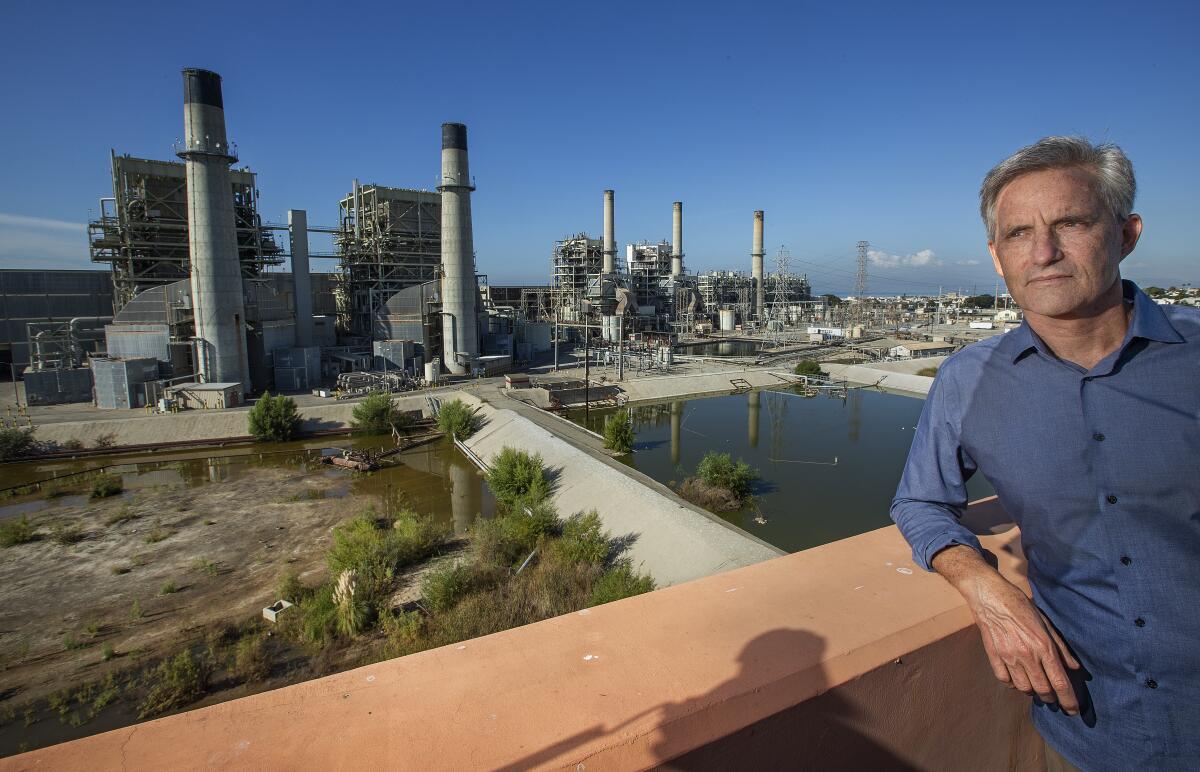
A gas-fired power plant along the Southern California coast has finally closed, more than two decades after local activists began fighting to shut it down. Details here from Tyler Shaun Evains and Lisa Jacobs at the Daily Breeze. I’ve been writing about the Redondo Beach gas plant for years, once calling it a “microcosm of the clean energy challenges confronting California and the nation” as energy companies and government officials look for tools to keep the lights on 24/7 without fossil fuels. Will hydrogen be one of those tools? Yet to be seen — but in a win for environmental activists, the Biden administration came out with a proposed hydrogen tax credit that would limit the benefits to projects that are strictly green, per the New York Times’ Brad Plumer.
New research finds that properties within 1 mile of a proposed wind farm can see an 11% drop in value, although the effect mostly disappears within a few years. Dan Gearino wrote about the research for Inside Climate News. I’m guessing opponents of large wind farms will use the study to support their cause, while companies and climate advocates who favor big wind will point to the ephemeral nature of the harm. For more on this topic, I’d encourage you to read my previous coverage of the arguments for and against big wind and solar farms, and of the pressing need for large-scale renewable energy.
Spanish energy giant Iberdrola is giving up on its bid to acquire New Mexico’s largest electric utility. Iberdrola subsidiary Avangrid had pressed on even after New Mexico officials rejected its proposed purchased of PNM Resources, taking the fight to court. But with no resolution in sight, Iberdrola is now backing away from the deal, Utility Dive’s Robert Walton writes. Elsewhere in the Land of Enchantment, Mary Catherine O’Connor has a great story for High Country News on the grassroots campaign that led a small, rural New Mexico electric utility to embrace a goal of 100% clean energy — and inspire others to do the same.
POLITICAL CLIMATE
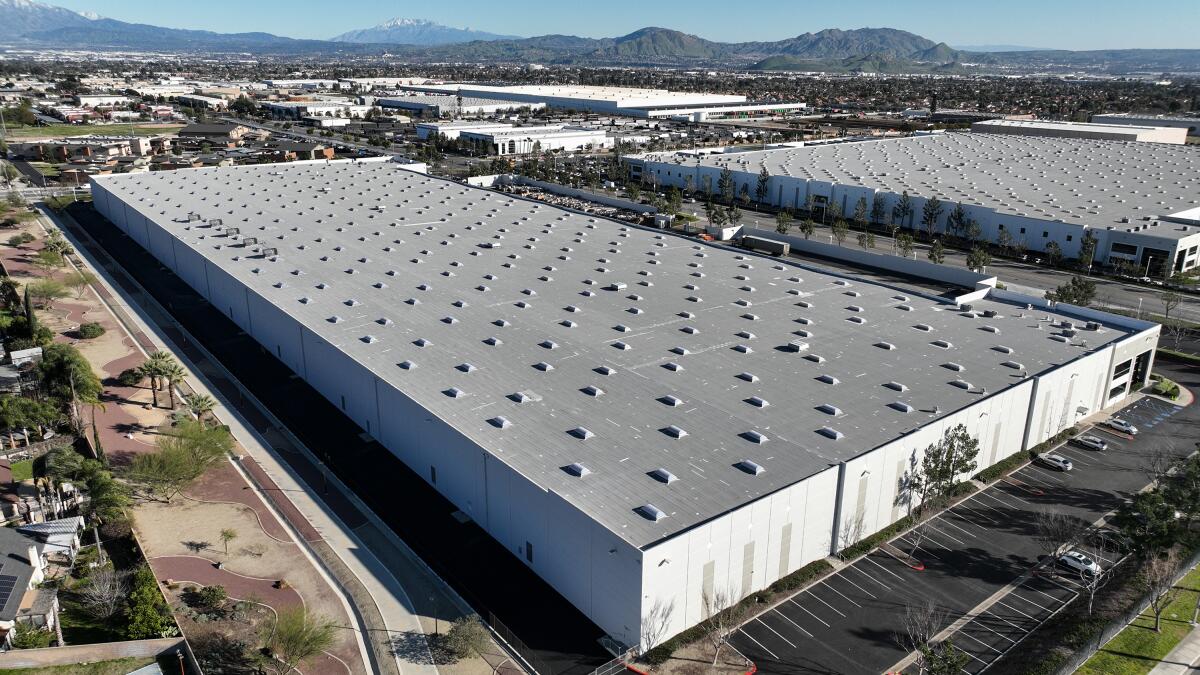
Southern California regulators are carrying out the biggest crackdown on warehouse smog pollution in recent memory, issuing more than 100 violation notices with the potential for big fines. The Times’ Tony Briscoe has the details, writing that the crackdown “prioritized noncompliant warehouses located in disadvantaged communities, including the Inland Empire, where residents endure the worst smog pollution in the nation.” Tony also reports that the federal Environmental Protection Agency is stepping in to help contain a smoldering fire at a landfill north of Los Angeles, which has been spewing pollution.
Los Angeles City Council has moved once again to limit oil drilling, voting 12-0 on a resolution that could ultimately block oil transport from the West Pico drill site. Details here from Dorany Pineda in The Times’ weekly City Hall newsletter, L.A. on the Record. The less oil at our disposal, the more we’ll need public transit — and a bullet train between Los Angeles and the Bay Area sure would help. My fellow L.A. Times columnist George Skelton wrote about the latest federal funding for high-speed rail, calling the money “a relatively small piece that’s vital to eventually making this fancy electric train work.”
The Newsom administration has formally approved a long-brewing, controversial project to reconfigure the state’s main water transport system by digging a tunnel underneath the fragile ecosystem of the Sacramento-San Joaquin River Delta. Now cue the lawsuits. (Or, if you don’t have a hot take yet, read about the Delta tunnel project, courtesy of the Sacramento Bee’s Ari Plachta.) In other water news, the San Francisco Chronicle’s Kurtis Alexander reports that environmental groups are suing to block the proposed Sites reservoir, which if built would be California’s largest new water storage tank in decades.
AROUND THE WEST
Becky Mitchell is the only female state representative at the Colorado River negotiating table — and she’s going to bat vocally for the state of Colorado, and Native American tribes too. “There’s been a couple times when I’ve tried to be quieter or politer to make myself heard, and it hasn’t worked,” Mithcell told the Colorado Sun’s Shannon Mullane. In the Columbia River Basin, meanwhile, states and tribes — not the Bonneville Power Administration — will now decide how to spend federal money targeted at salmon recovery efforts. Here’s the story from Oregon Public Broadcasting’s Tony Schick.
“‘Twas the week after Christmas, and in a quiet corner of the San Fernando Valley, lines of waste collection trucks waited to offload their goods onto a growing mountain of garbage.” So begins this fascinating story by The Times’ Hayley Smith and Susanne Rust, which we should all probably keep handy 11 months from now when we’re deciding what kinds of gifts to give our friends and family for the holidays — and how to wrap them too. And if you’re interested in recycling your Christmas tree, here’s a guide for Southern California residents, courtesy of Anthony De Leon. Don’t wait — dry trees can be fire hazards.
A volunteer group in California’s Orange County has done a great job rescuing horses from wildfires. But with dwindling membership, it’s being forced to scale back, my colleague Gabriel San Román writes. “It’s certainly not unique to Orange County that an animal response team feels it doesn’t have the resources to meet its current efforts,” one expert said. “But this is the first instance that I’m aware of where an organization is actually taking the step of circling the wagons and restricting their services.”
ONE MORE THING

If you live in or near Los Angeles, you might consider swinging by the Academy Museum of Motion Pictures this month. The museum is hosting a series of screenings, “Beware the Elements! Natural Disasters on Film,” focused on how climate change is portrayed on screen. Several films will be followed by discussions between scientists and L.A. Times journalists.
I’ll be talking with Chad Nelson, chief executive of the Surfrider Foundation, after the screening of the 2015 Norwegian film “The Wave” the afternoon of Saturday, Jan. 13. You can buy a ticket here if you’re interested. Hope to see you there!
This column is the latest edition of Boiling Point, an email newsletter about climate change and the environment in California and the American West. You can sign up for Boiling Point here. And for more climate and environment news, follow @Sammy Roth on X.
Toward a more sustainable California
Get Boiling Point, our newsletter exploring climate change, energy and the environment, and become part of the conversation — and the solution.
You may occasionally receive promotional content from the Los Angeles Times.






